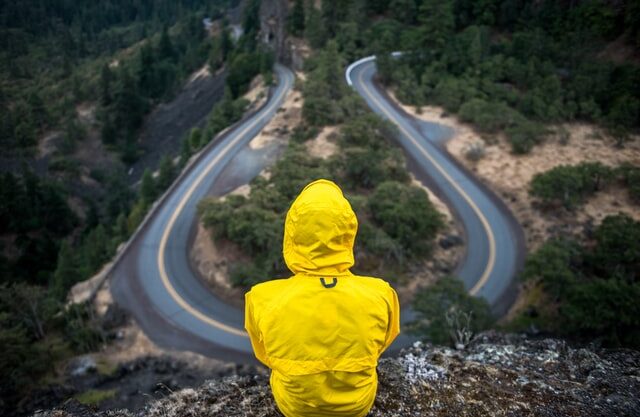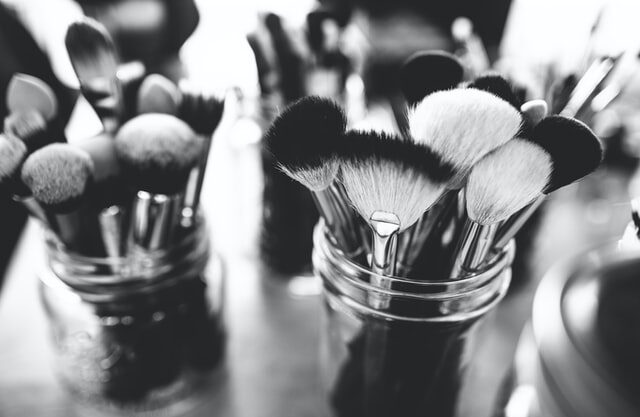Guess what the average lifetime of a business or a brand is? If you’re a bit along the cynical lines, you probably got it close!
It might be a bit troubling to realize that it is projected to be a little over 10 years by 2025. The average lifespan has seen a rapid decline of 500% from the 1960s till now.
Amidst the turbulence, there have survived a small portion of brands that stand steady even now. With the constantly changing consumer taste and behavior trends, the beauty industry is fickler than the rest. For decades together, how does a brand react and hold its position without any major falters or setbacks?
How do they get it right? Let’s dive straight into the strategies of the market leader itself – L’Oreal – a company that has remained undefeated on top for over a century.
Innovation – The prime motivator
In 1909, a young chemist, Eugene Schueller, successfully tried out an experiment to create a formula for hair dye for the Parisian Hairdressers. Once he realized its potential, he launched his own company with the product naming it ‘L’Oreal.’
From then till now, at its heart, L’Oreal has always been an innovative company in every sense, allocating a significant portion for research and innovation every year (a whopping € 985 million in 2019 approx.!), with a vast number of research facilities across the world.
In 2015, L’Oreal was named one of Fast Company’s “50 Most Innovative Companies in the World”, the only beauty company to bag the honor.
Now with AI becoming all-pervasive, beauty tech is gaining momentum like never before and L’Oreal as a leading beauty company is one of the firsts to lead the way into it. Right from creating a personalized experience for its customers to launching its AI-powered at-home system ( yep, you read it right! There’s a device now for beauty personalization), L’Oréal is at full speed to ensure it always stays a step ahead.
In addition to this, the open innovation program of L’Oréal nurtures the upcoming start-ups, embracing disruptive tech and ideas in the world of beauty. This shows the ground reality helping them to advance in the industry by being future-ready. As for the upcoming start-ups, a collaboration with the world’s leading brand gives them a much-needed acceleration, thus, establishing a win-win for both parties.
The unwavering Global Cosmetic Leader
With a widespread presence in 150 countries and a good 36 brands under its umbrella, L’Oréal sails through them smoothly, having mastered the art of universalization. One of the core catalysts to drive them successfully across nations is their conscious effort to respect consumers’ different tastes in every part of the world and catering to those requirements locally.
To cite an example here, when L’Oréal entered the Indian market in 1994, they rightly tapped the growing middle-class population with increasing disposable income, thus hitting a gold mine of potential consumers. In the coming years, they launched localized products catering specifically to the Indian mindset – being extremely value-conscious without compromising the quality.
They released affordable versions of their products – sachets for shampoos and mini-versions of lipsticks, thereby pulling in new consumers in the process. Products that had a tinge of Indian tone became instant hits – Garnier Black Naturals, Colossal Kajal from Maybelline, to name a few. They were the first to introduce the professional haircare market through their hair salon business in India. By 2018, L’Oréal expanded to a massive 45000 hair salons, and L’Oréal Professional Products Division of L’Oreal Company in India became the Market Leader with a 56% market share.
Read: What makes Beauty E-Commerce startup Nykaa unique?
In the Chinese market, their key focus is on digitalization at present. The rising demand for personalization has made L’Oréal China engaged in a vast number of strategies that use digitalization, AI to reach the consumers – launching a 3D augmented reality makeup try-on, launching the world’s first mobile testing application targeting acne, Custom D.O.S.E. personalized skincare, etc. Their partnering with the e-commerce giant Alibaba is yet another move to serve their online demands.
The brand essentially remains the same across the world but differs on the products based on their audience. This has proven to be a successful formula in every region they have set foot in.
Throughout the years, L’Oréal has made several acquisitions in promising businesses including independent beauty companies, research facilities, etc. that in turn has led to its multi-fold growth over the years. In emerging markets, placing professionals with multicultural backgrounds gives them a distinct competitive advantage in reaching out to potential consumers.
The global CEO Jean Paul Agon has stated strongly multiple times about the commitment towards their mission – ‘Beauty for all’.
L’Oréal gives significant importance to diversity and inclusion in its workspace, thus, earning its place amongst the top 10 companies by the 2020 Refinitiv Diversity & Inclusion Index. Diversity in decision-making processes ensures a clear understanding of multiple perspectives, thereby ensuring a better integration with the local requirements.
Striking the right chord between the global and the local targets is extremely crucial for an international brand and it is safe to say that L’Oréal has perfected it!
Connect with the consumers
A brand with this wide range of target demographics and a vast number of products under its portfolio will have the challenging task of implementing the marketing strategies to address the needs of both its current and potential consumers.
L’Oréal taps its customer engagement with Precision Marketing providing personalized content for its consumers online. With its Marketing 3.0 introduction in 2018, L’Oréal’s focus on a digital transformation in its marketing methods has been in full swing. It uses data-driven techniques to boost its growing e-commerce sales and improve customer experiences.
Read: Estée Lauder Companies Inc: Story of beauty and aspirations
In 2020, its social media and customer experience management strategy’s main focus was through its Social Media marketing model called ‘Listen to Engage.’ Especially in the post-COVID-19 phase, the e-commerce channel has seen a spike in the past months. L’Oréal is prepared and ready to address the increasing demands of consumer engagement through online means.
Digital influencers are yet another route through which L’Oréal makes its presence felt. Marc Duquesnoy, Social Media Performance Director for the L’Oréal Group’s Global CDO Team, states that the Influencers are important as they are essential in creating trends and increasing legitimacy and trustworthiness amongst consumers.
Choosing the right influencer with the right product is a key component, and when executed right, can go a long way. Leveraging a strong partnership with global influencers along with the insights from digitalization, L’Oréal has everything needed to hold the attention of its consumers, thus creating a smoother pathway to reach them.
In addition to this, L’Oréal has also been a strong advocate of sustainability by ensuring its actions in reversing environmental degradation. Since 2005, it has taken active steps to reduce its carbon emission and its factories and outlets’ environmental impact, pledging to be completely sustainable by 2030.
In recent times, consumers are actively expecting a sense of responsibility and accountability from corporations for their actions affecting the environment. L’Oréal’s active steps here sends a strong message to its consumers regarding its intention to the same, thereby strengthening its connection.
Conclusion
In conclusion, considering all the above factors – ranging from continuous innovation across decades; its unwavering tenacity in balancing between both global and local audience and its right marketing strategies at the right time has landed L’Oréal a clear favorite among its consumers. Their continuous efforts towards sustaining their position as the global market leader sure do make them worth it!
Interested in reading our Advanced Strategy Stories. Check out our collection.
Also check out our most loved stories below

IKEA- The new master of Glocalization in India?
IKEA is a global giant. But for India the brand modified its business strategies. The adaptation strategy by a global brand is called Glocalization

Why do some companies succeed consistently while others fail?
What is Adjacency Expansion strategy? How Nike has used it over the decades to outperform its competition and venture into segments other than shoes?

Nike doesn’t sell shoes. It sells an idea!!
Nike has built one of the most powerful brands in the world through its benefit based marketing strategy. What is this strategy and how Nike has used it?

Domino’s is not a pizza delivery company. What is it then?
How one step towards digital transformation completely changed the brand perception of Domino’s from a pizza delivery company to a technology company?

Why does Tesla’s Zero Dollar Budget Marketing work?
Touted as the most valuable car company in the world, Tesla firmly sticks to its zero dollar marketing. Then what is Tesla’s marketing strategy?


















